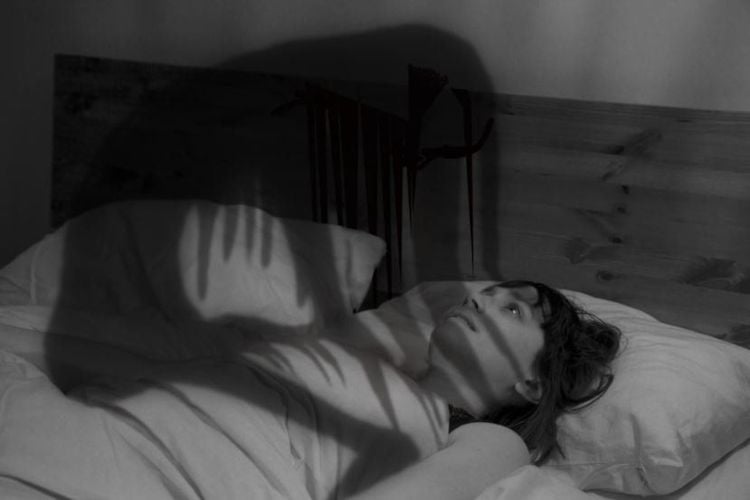This is an automatically translated article.
Narcolepsy is caused by a disorder that occurs when the brain's control of the body's sleep-wake cycle is faulty. You may suddenly fall asleep while driving or eating. So how do you differentiate narcolepsy from other disorders?
1. What is narcolepsy?
Narcolepsy - a chronic neurological disorder that affects the brain's ability to control sleep-wake cycles. People with narcolepsy may feel rested upon waking, but then feel very sleepy throughout the day. Many people with narcolepsy also experience irregular and disrupted sleep, which can be associated with frequent nighttime awakenings.
People with narcolepsy may have an impact on activities of daily living, for example, the person may fall asleep inadvertently even while they are performing activities such as driving, eating or drinking. either talking or sleeping too much. Other symptoms of narcolepsy may include sudden muscle weakness while awake that leaves the person limping or unable to move (dyskinesia), vivid dream-like images, or possible hallucinations. total paralysis just before falling asleep or shortly after waking up (sleep paralysis).
During a normal sleep cycle, a person can go into rapid eye movement (REM) sleep after the first 60 to 90 minutes. Dreams occur during REM sleep and the brain keeps muscles soft during this sleep phase, which prevents people from realizing their dreams. People with narcolepsy often fall asleep quickly, within 15 minutes of falling asleep. In addition, muscle weakness or dream activity of REM rapid eye movement sleep may or may not be present during sleep. Narcolepsy, if left undiagnosed or untreated, can interfere with psychological, social, and cognitive development and function and can inhibit activities of daily living such as school, work, and life. and social.
2. Possible cases of narcolepsy
Narcolepsy affects both men and women. Symptoms usually begin in childhood, adolescence, or young adulthood (ages 7 to 25), but can occur at any time in life. Narcolepsy is often misdiagnosed compared with other conditions, such as mental disorders or emotional problems, so it can take years for a person to get an accurate diagnosis.

Chứng ngủ rũ có thể gặp ở cả nam giới và nữ giới và khó chẩn đoán
3. Signs of narcolepsy and how it differs from other disorders
You need to distinguish narcolepsy from deep sleep. Narcolepsy - a lifelong problem, but it usually doesn't get worse as the person gets older. The symptoms of narcolepsy may partially improve over time, but they will never go away completely.
The most typical symptoms of common narcolepsy include: excessive daytime sleepiness, trouble sleeping, sleep paralysis, and hallucinations. Although all sufferers experience excessive daytime sleepiness, only about 10 to 25% of those affected will experience all other symptoms during the course of the illness.
Excessive daytime sleepiness (EDS). All people with narcolepsy have EDS, and this is often seen as the most obvious symptom. EDS is characterized by persistent drowsiness, regardless of how much time a person sleeps at night. However, the sleepiness in narcolepsy is like a "sleep," the feeling of drowsiness comes on quickly. Between episodes of sleep, individuals have normal levels of alertness, especially if doing activities that get their attention.
Momentary paralysis. The sudden loss of muscle tone while a person is awake leads to weakness and loss of voluntary muscle control. This momentary paralysis is often triggered by sudden, strong emotions such as laughter, fear, anger, stress, or excitement. Symptoms of transient paralysis may appear weeks or even years after the onset of EDS. Some people may have only one or two attacks in their lifetime, while others may have multiple attacks during the day. In about 10% of cases of narcolepsy, transient paralysis is seen as the first symptom to appear and can be misdiagnosed as a seizure disorder. Attacks can be mild and involve only a transient feeling of weakness in a limited number of muscles, such as slightly drooping eyelids. The most severe attacks result in total body collapse in which individuals are unable to move. But even in the most severe stages, people are fully awake. Balloon . The temporary inability to move or speak during sleep or wakefulness usually lasts only a few seconds or minutes and is similar to the inhibition of voluntary muscle activity caused by REM. Sleep paralysis is like insomnia, except it occurs at the edge of sleep. As with transient paralysis, people remain fully awake. Even when severe, sleep paralysis and transient paralysis do not lead to permanent dysfunction - once the sessions are over, the person quickly recovers full mobility and speech. myself Illusion. Very vivid and sometimes frightening images can accompany sleep paralysis and often occur when people are falling asleep or waking up. Usually, the content is mostly visual, but any other sense can be involved.

Ngủ rũ khác với tình trạng bóng đè mà nhiều người đang gặp phải
4. Types of narcolepsy
There are two main types of narcolepsy:
Type 1 narcolepsy (formerly known as narcolepsy with transient paralysis). This diagnosis is based on whether the individual has low levels of a brain hormone (hypocretin) or reports difficulty falling asleep and excessive daytime sleepiness on a special nap test. Type 2 narcolepsy (formerly known as narcolepsy without transient paralysis). People with this condition often experience excessive daytime sleepiness but do not usually experience emotional-triggered muscle weakness. They also often have less severe symptoms and have normal levels of the brain hormone hypocretin. Secondary narcolepsy can be caused by injury to the hypothalamus, an area deep in the brain that helps regulate sleep. In addition to experiencing the typical symptoms of narcolepsy, individuals may also have severe neurological problems and sleep for long periods of time (more than 10 hours) each night.
5. Causes of narcolepsy
Nearly all people with narcolepsy with transient paralysis have very low levels of the natural chemical hypocretin, which promotes wakefulness and regulates REM sleep. Hypocretin levels are usually normal in people with narcolepsy without transient paralysis.
Although the cause of narcolepsy is still not completely understood, current research suggests that narcolepsy may be the result of a combination of factors working together to cause hypocretin deficiency . These factors include:
Autoimmune disorders. When there is transient paralysis, it is usually caused by the loss of brain cells that produce hypocretin. Although the reason for this cell loss is unknown, it appears to be related to abnormalities in the immune system. Autoimmune disorders occur when the body's immune system turns against itself and mistakenly attacks healthy cells or tissues. Researchers believe that in people with narcolepsy, the body's immune system selectively attacks hypocretin-containing brain cells with a combination of genetic and environmental factors. Prehistoric. Most cases of narcolepsy are sporadic, meaning the disorder occurs in people with no known family history. However, clusters within families do occasionally occur - up to 10% of people diagnosed with narcolepsy with transient paralysis report having a close relative with similar symptoms. Brain damaged. Rarely, narcolepsy is the result of traumatic injury to the parts of the brain that regulate wakefulness and REM sleep, or from tumors and other diseases in similar regions. At Vinmec Times City International General Hospital, the Psychological Clinic can effectively help patients get rid of narcolepsy in a short time. With a team of qualified and experienced psychologists in examining, treating and consulting mental health problems with psychological tests and highly effective appropriate therapies, people Early onset of narcolepsy can be overcome, regaining health and healthy sleep.
Please dial HOTLINE for more information or register for an appointment HERE. Download MyVinmec app to make appointments faster and to manage your bookings easily.













